|
25. Aporia crataegi (Linnaeus, 1758) / Black-veined white / Pieridae – Pierinae
NL: groot geaderd witje / D: Baum-Weiβling / F: gazé, le piéride de l’aubépine
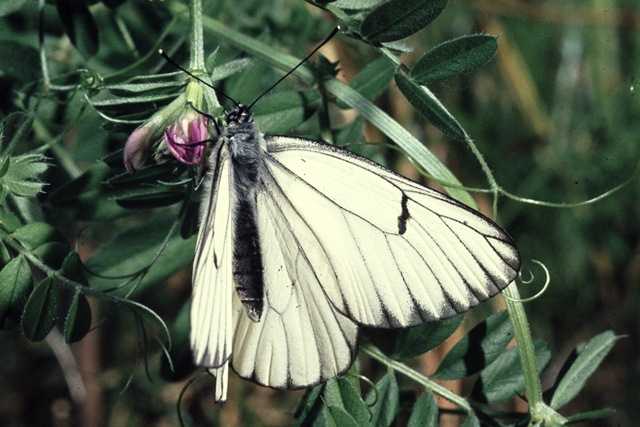 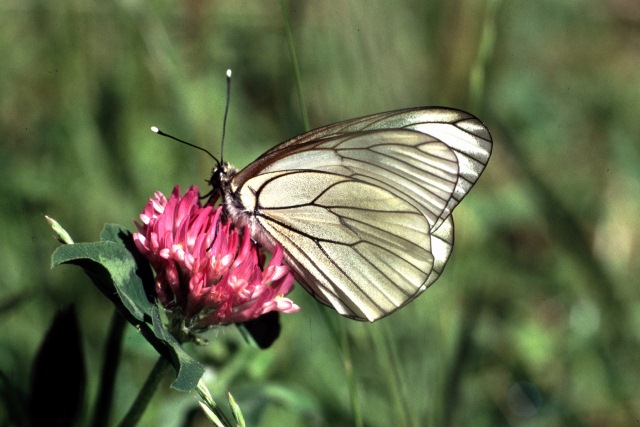 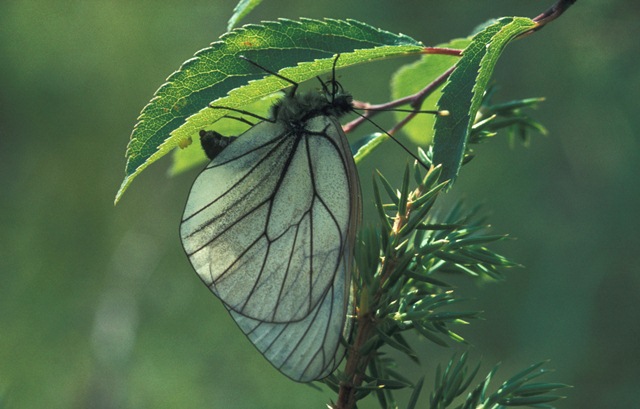
Photographs: Frits Bink ©.
Large, wing length 31 (28-33) mm. Currently restricted to the south-eastern part of the Benelux, the warmest and driest part. It was not rare up to 1960 in the Netherlands in the provinces Noord-Brabant and Gelderland, but has now nearly disappeared from the country, some strays are recorded occasionally.
Butterfly is on the wing from end-May until early-July. The species occurs in maritime and severe continental climates, amplitude 7 to 20, the required heat sum is 450°d and tolerated 2300°d, corresponding with climate windows of 20 weeks and 41 weeks.
In England, numbers of this species were known to fluctuate enormously. In the New Forest, Hampshire, it was very common in 1860/70 but the colony had collapsed three years later. In Kent the butterfly was not seen from 1875/82 and there were several attempts to reintroduce it using specimens from the continent and it was common again between 1902 and 1906 but another decline set in and the last record was in 1922; 1923 is considered as the time of its disappearance from England.
Typical of this species is that it sometimes occurs in mass and defoliate its host plants (Thomas & Lewington, 1991: 202).
Ecological characteristics
Behaviour over time
Overwintering: half grown third instar larva in a nest with 10-40 others, constructed of withered leaves spun together, attached to a twig of a shrub or tree.
Reproduction: oviposition starts after 3-4 days when the body contains 185 (130-227) eggs. Observed potential production 1.2 times as much.
Larval feeding periods: in summer about 20 days in period of mid-June until mid-August, in spring 34 (24-42) days from early-April until end-May.
Generations: always one.
Spreading of risk: not observed.
Life cycle: egg 16 (12-23) days; larva 46-47 weeks; pupa 16 (12-19) days.
Life span of adult: short, 2 weeks.
 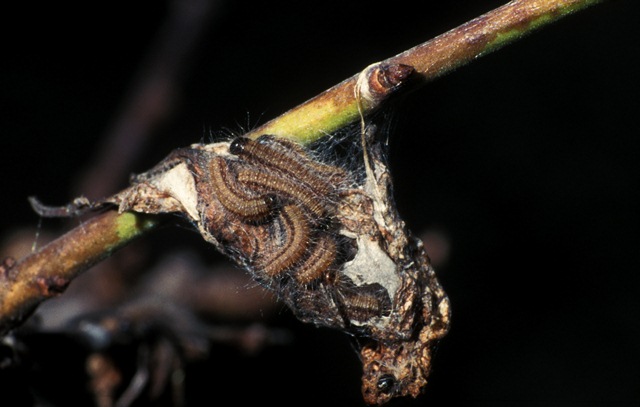
Photographs: Frits Bink ©.
Behaviour in space
From stay-at-home to migrant: stay-at-home and some nomadic behaviour.
Finding a mate: males patrol and inspect shrubs for freshly hatched females.
Orientation in the landscape: open field with some shrubs, wood edges and open forest.
Oviposition: Eggs are laid in batches on the underside of a mature leaf. Number of eggs per batch in two rearing experiments 23.6 ± 16 (n=13) and 20.2 ± 14 (n=25), in nature, Gotland, 59 ± 29 (n=30).
Defence
Threats from other organisms: the larvae are red & black in colour, in theory these should act as warning colours and repel avian predators. However in an experiment in a garden it was observed that birds with young ate a small number of these larvae each day.
Threats from the environment: the larvae of this species spend a large amount of time in diapause, sheltered in the nest and, in that stage, they can resist cold, heat and drought.
Feeding habits
Adult: nectar of flowers of herbs like knapweed, however butterflies spend little time foraging.
Larva: newly hatched larvae feed on mature leaves and hide in a shelter of leaves loosely spun together, in spring they are more solitary on young shoots.
Larval foodplants
Plant species: Rosaceae, Crataegus laevigata, C. monogyna, Prunus cerasifera, P. domestica, P. mahaleb, P. spinosa, Sorbus aucuparia.
Journal
Rearing experiments based on specimens from Buttle, Gotland, Sweden:
16 July 1982: batch of eggs collected from a rowan.
31 July: eggs hatched.
11 August: larvae moulted.
20 August: larvae have constructed their overwintering nest.
Overwintered outdoors.
27 March 1983: taken indoor because larvae became active and basked on the nest.
3 April: larvae ate buds.
8 April: larvae in moult.
8 May: larvae almost fully grown, sometimes congregated.
19 May: pupae observed.
31 May to 2 June: adults appeared.
Table 25-1. Results of dissections

Table 25-2. Collection and observation localities
B, Ethe, 240 m, 49° 36’ 25”N – 5° 35’ 50”E; 11 July 1984.
D, Meetschow 53° 02’ 32”N – 11° 23’ 32”E; 22 June 1984.
DK, Aalbeak 57° 37’ 10”N – 10° 17’25”E; 15 June 2004.
DK, Frøstrup 57° 05´ 48”N – 8° 52´ 54”E; 13 June 2004.
DK, Lundby 56° 55’46”N – 9° 29’ 43”E; 8 July 2005.
DK, Ørnhej 56° 13´ 06”N – 8° 34´ 00”E; 13 June 2004.
DK, Tofte Mose 56° 49 16”N – 10° 16’ 08”E; 4 July 2005.
F, La Garde Freinet, 100 m, 43° 19’N – 6° 30’E; 10 May 1997.
F, Lorraine, Lion-devant-Dun 300 m, 49° 23’ 40”N – 5° 14’ 03”E; 11 July 1984.
L, Kautenbach 316 m, 49° 57’18”N – 6° 00’ 59”E; 21 June 2006.
S, Gotland, Buttle 57° 25’ 09”N 18° 34’ 38”E; 17 July 1982, 25 June 2004.
S, Gotland, Folhammar 57° 20’ 49”N – 18° 44’ 12”E; 19 June 2004.
S, Gotland, Kappelshamn 57° 55’ 04”N – 18° 45’ 20”E; 30 June 2004.
S, Gotland, Klinteklinten 57 40’ 14”N – 18 46’ 26”E; 13 July 2004.
S, Gotland, Lickershamn 57° 50’ 17”N – 18° 34’ 54”E; 3 July 2004.
S, Gotland, Lickershamn 57° 51’ 05”N – 18° 37’ 46”E; 17 July 2004.
S, Gotland, Ljugarn 57° 22’ 03”N – 18° 41’ 31”E; 24 June 2004.
S, Gotland, Russväter 57° 23 29”N – 18° 43’ 36”E; 21 June 2004.
S, Gotland, Stygmyr 57° 50’ 10”N – 18° 38’ 32”E; 18 July 2004.
S, Öland, Ismantorp borg 56° 44’ 44”N – 16° 38’ 33”E; 10 July 1982.
Fig. 25-1. Aporia crataegi, phenogram adapted from Fichefet et al. 2008: 73.
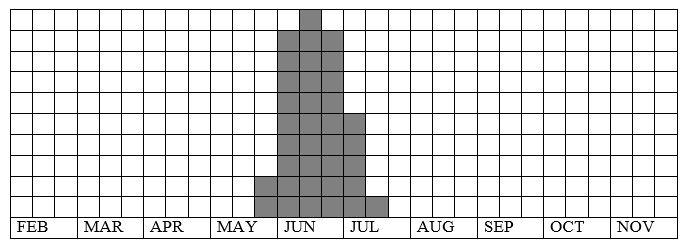
Fig. 25-2. Aporia crataegi, habitat characteristics.
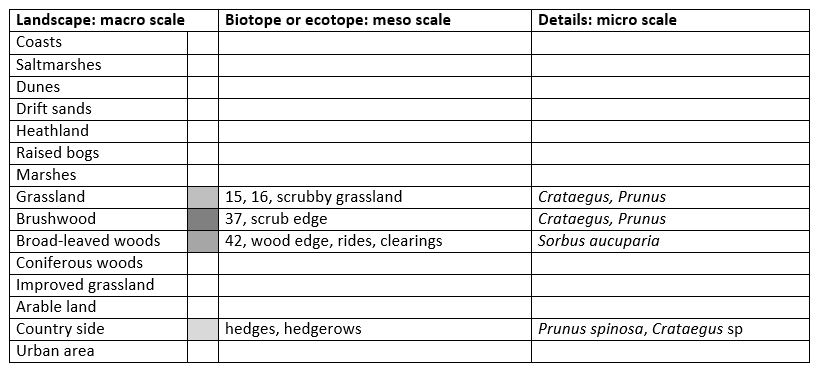
Fig. 25-3. Aporia crataegi, climate matrix, heat-sums 450 - 2300°d.
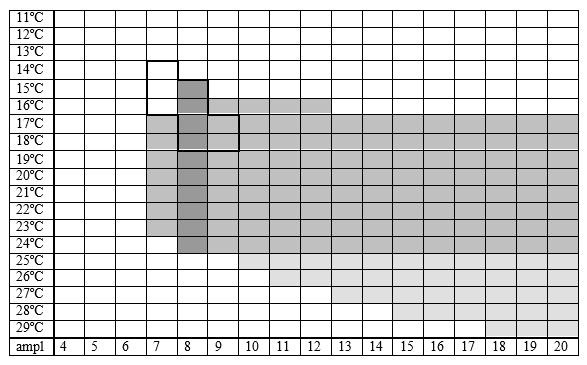
|










